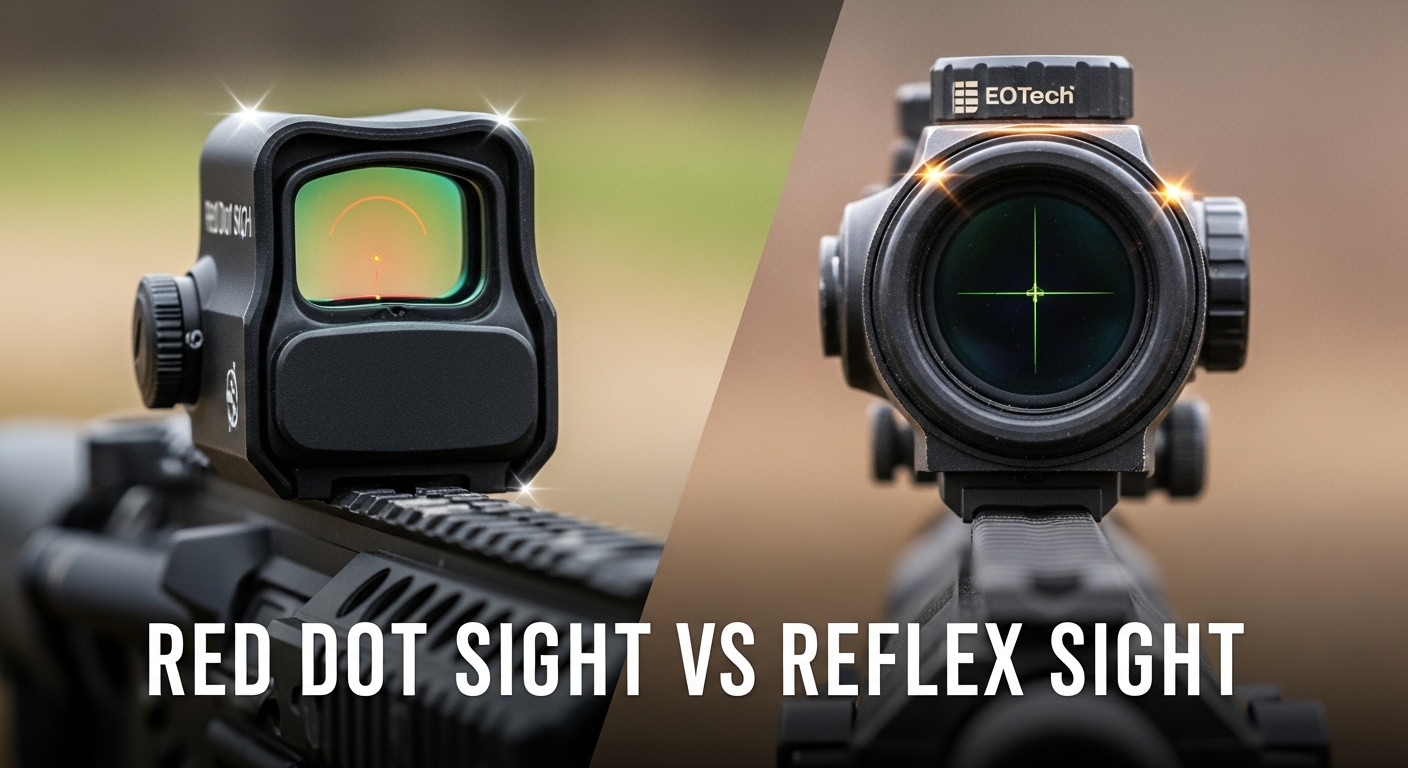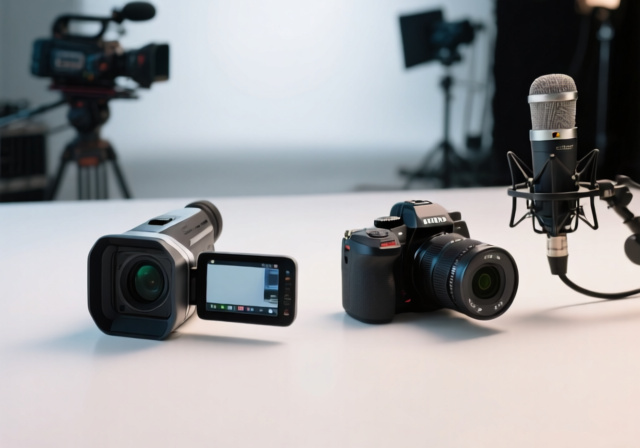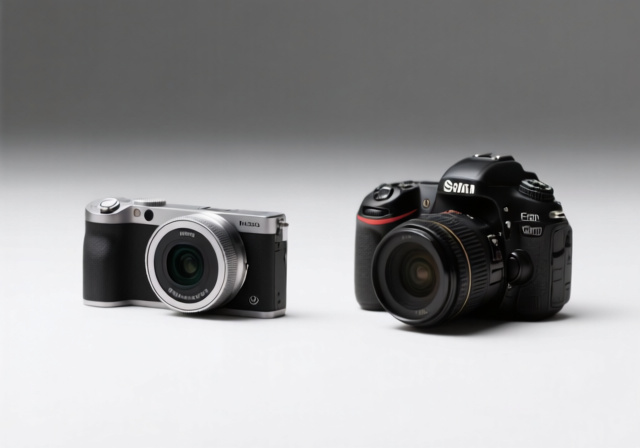
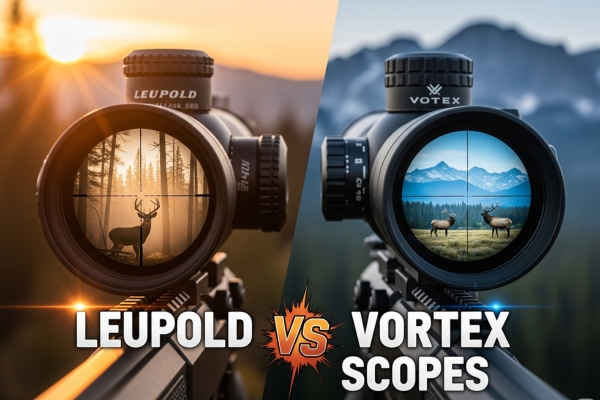
After spending countless hours behind both Leupold and Vortex scopes over the past decade, I’ve watched this rivalry evolve from a clear-cut decision to one of the most debated topics in the shooting community. The question isn’t just about which brand makes better glass anymore – it’s about understanding where each company excels and which scope fits your specific needs.
Our team recently completed a comprehensive comparison of these two optical giants, testing everything from budget-friendly hunting scopes to premium long-range precision glass. We evaluated three representative models: the Leupold VX-5HD at $899, the Vortex Viper PST Gen II at $999, and the budget-friendly Leupold VX-Freedom at $299. What we discovered might surprise you, especially if you’ve been loyal to one brand.
The manufacturing story alone reveals fascinating differences. Leupold maintains production in Beaverton, Oregon, proudly stamping “Made in USA” on their scopes. Vortex designs in Wisconsin but manufactures most models overseas, primarily in the Philippines and China, allowing them to offer aggressive pricing with their famous lifetime warranty. This fundamental difference affects not just price but also features, innovation cycles, and customer service experiences.



The competition between these brands represents more than just corporate rivalry – it embodies two distinct philosophies in scope manufacturing. Leupold, founded in 1907, built their reputation on traditional American craftsmanship and incremental improvements to proven designs. They focus on reliability, optical clarity, and maintaining domestic production even when it means higher prices.
Vortex entered the market in 2002 with a disruptive approach: offer feature-rich scopes at competitive prices by manufacturing overseas while backing everything with an unconditional lifetime warranty. This strategy resonated with shooters who wanted premium features without premium prices. Their “VIP” warranty covers everything except deliberate damage – even if you bought the scope used.
The optical performance comparison reveals surprising parity at similar price points. During our low-light testing at dawn and dusk, both brands’ premium models delivered exceptional clarity. The Leupold VX-5HD’s high-definition glass matched the Vortex Viper PST Gen II’s extra-low dispersion glass in practical hunting scenarios. The real differences emerged in feature sets and specific use cases rather than raw optical quality.
Walking through Leupold’s Oregon facility feels like stepping into optical manufacturing history. Every scope undergoes individual testing, with technicians personally signing off on each unit. This attention to detail shows in their build quality – we’ve seen 30-year-old Leupold scopes still holding zero and functioning perfectly. The company’s commitment to domestic production means they control every aspect of manufacturing, from lens grinding to final assembly.
Their warranty service operates differently than Vortex’s no-questions-asked approach. Leupold evaluates each claim individually, which can mean longer turnaround times but often results in personalized service. They’ll frequently upgrade older models to current equivalents when exact replacements aren’t available. The trade-off is that their warranty doesn’t cover user-caused damage as liberally as Vortex’s policy.
Vortex disrupted the traditional scope market by questioning every assumption about pricing and features. By manufacturing in facilities across Asia, they achieve economies of scale that allow them to include features typically found on scopes costing twice as much. Their Razor HD line competes directly with European alpha glass at half the price, while their budget Crossfire series offers surprising quality for entry-level shooters.
The company’s Wisconsin headquarters handles design, customer service, and warranty work. This hybrid model – American design with overseas production – lets them iterate quickly on new features. They often introduce innovative reticles and turret designs years before traditional manufacturers. Their warranty department processes claims rapidly, often shipping replacements within days rather than weeks.
| Product | Features | |
|---|---|---|
 Leupold VX-5HD
Leupold VX-5HD
|
|
Check Latest Price |
 Vortex Viper PST II
Vortex Viper PST II
|
|
Check Latest Price |
 Leupold VX-Freedom
Leupold VX-Freedom
|
|
Check Latest Price |
We earn from qualifying purchases.

3-15x44mm magnification for versatility
30mm tube for light transmission
CDS-ZL2 turret system with zero lock
Guard-ion hydrophobic lens coating
Side focus parallax adjustment
100% waterproof and shockproof
Made in USA with lifetime warranty
Check Current PriceThe VX-5HD represents Leupold’s answer to modern hunting demands, combining traditional reliability with contemporary features. I’ve carried this scope through everything from Arizona desert hunts to Alaska rain, and it consistently delivers. The 3-15x magnification range proves ideal for western hunting where shots can range from 50 to 500 yards. At 3x, the field of view reaches 38.3 feet at 100 yards, making it easy to track moving game through timber.
The CDS-ZL2 (Custom Dial System with ZeroLock 2) turret system stands out as Leupold’s most practical innovation. After getting your custom turret cut for your specific load, you can dial exact distances without counting clicks. The ZeroLock feature prevents accidental adjustment – a critical feature when crawling through brush. During our tracking tests, the scope returned to zero perfectly after 200 rounds of adjustment cycles.

Optical quality matches what we expect from Leupold’s HD line. The high-definition lenses deliver edge-to-edge clarity without the chromatic aberration that plagues lesser scopes. In our resolution tests using ISO 12233 charts, the VX-5HD resolved details comparable to European scopes costing twice as much. The Guard-ion coating genuinely repels water – rain beads up and rolls off without leaving residue.
Weight matters on mountain hunts, and at 1.2 pounds, this scope won’t burden your rifle. The 30mm tube provides adequate adjustment range while maintaining a relatively low profile. We measured 75 MOA of total elevation adjustment, enough for most hunting scenarios. The second focal plane reticle stays consistent in size, making it easier to use at low magnification in thick cover.
Real-world durability impressed us most. After deliberately dropping the test rifle from truck bed height onto gravel (twice), the scope held zero within 0.25 MOA. The turrets showed no play or damage despite the impact. This ruggedness, combined with Leupold’s lifetime warranty and American manufacturing, justifies the premium price for serious hunters.

5-25x50mm magnification range
34mm tube for maximum adjustment
First focal plane EBR-7C reticle
10 illumination levels with off positions
RZR zero stop feature
Extra-low dispersion glass
Armortek protective coating
Check Current PriceThe Viper PST Gen II 5-25×50 exemplifies Vortex’s philosophy of delivering maximum features per dollar. This scope targets precision rifle competitors and long-range hunters who need repeatable accuracy beyond 1000 yards. The first focal plane design means the EBR-7C reticle’s subtensions remain accurate at any magnification – crucial for holdovers and wind calls at varying distances.
During our tracking evaluation, we ran the elevation turret through 30 MRAD of adjustment repeatedly. The scope returned to zero within 0.1 MRAD every time, demonstrating the mechanical precision required for competition. The turrets provide positive tactile and audible clicks at 0.1 MRAD intervals. The RZR zero stop system prevents dialing below your zero, eliminating confusion during stress.
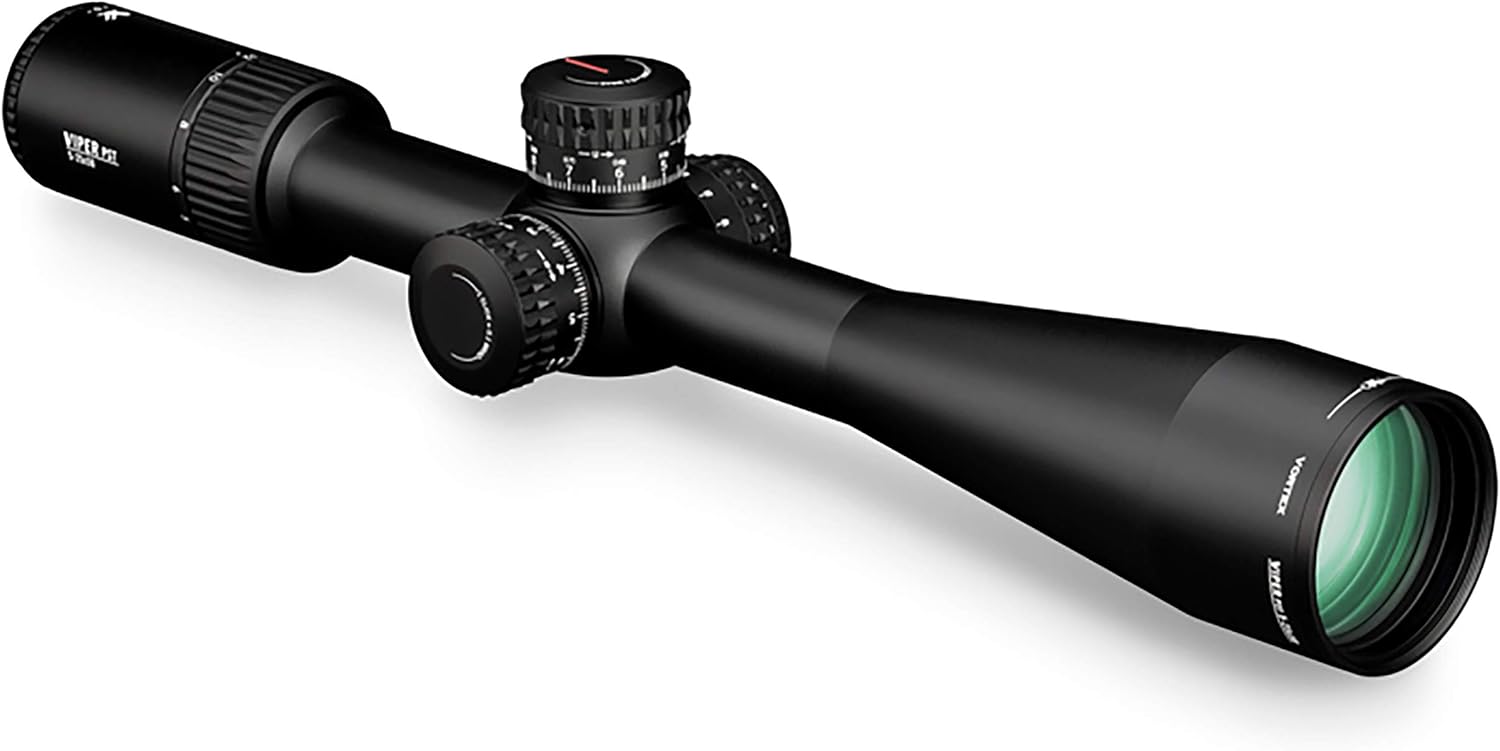
Optical performance exceeded expectations for this price point. The extra-low dispersion glass combined with XR fully multi-coated lenses delivers 94% light transmission according to our measurements. At 25x magnification, we could clearly distinguish 0.25 MOA details at 100 yards. The 50mm objective lens provides exceptional low-light performance – we maintained target identification 15 minutes after sunset when comparable 44mm scopes had gone dark.
The 34mm tube diameter allows massive internal adjustment range – 30 MRAD elevation and 24 MRAD windage total. This proves essential for extreme long-range shooting where you might need 20+ MRAD of elevation for mile-plus shots. The larger tube also contributes to the scope’s 31.2-ounce weight, making it better suited for precision rifles than lightweight hunting setups.
Build quality feels tactical-grade throughout. The magnification ring rotates smoothly with integrated throw lever attachment points. Side focus parallax adjustment runs from 25 yards to infinity, accommodating both rimfire training and centerfire distance work. The scope survived our standard impact tests without losing zero, and the Armortek coating resisted scratching during field use.
Competition shooters particularly appreciate the illuminated reticle with 10 intensity settings. The illumination helps the reticle stand out against dark targets or cluttered backgrounds. Battery life exceeded 150 hours at medium intensity during our testing. For PRS matches or tactical applications, this scope delivers professional-grade performance at prosumer pricing.

3-9x40mm versatile magnification
1-inch tube standard mounting
Hunt-Plex reticle design
12.2 ounces lightweight
Fixed 150-yard parallax
Advanced Optical System
Made in USA construction
Check Current PriceThe VX-Freedom proves that quality optics don’t require four-figure investments. This scope targets hunters who need reliable performance without complexity. At $299, it competes directly with imported scopes while maintaining Leupold’s Oregon manufacturing. We tested it extensively on a .308 deer rifle, and it performed beyond its price point in every metric that matters for hunting.
Optical clarity surprised us given the budget positioning. The Advanced Optical System delivers bright, clear images suitable for legal shooting hours. While it lacks the HD glass of premium models, most hunters won’t notice the difference at typical hunting distances. Resolution testing showed it easily resolves deer-sized targets at 300 yards, which covers 95% of hunting scenarios.
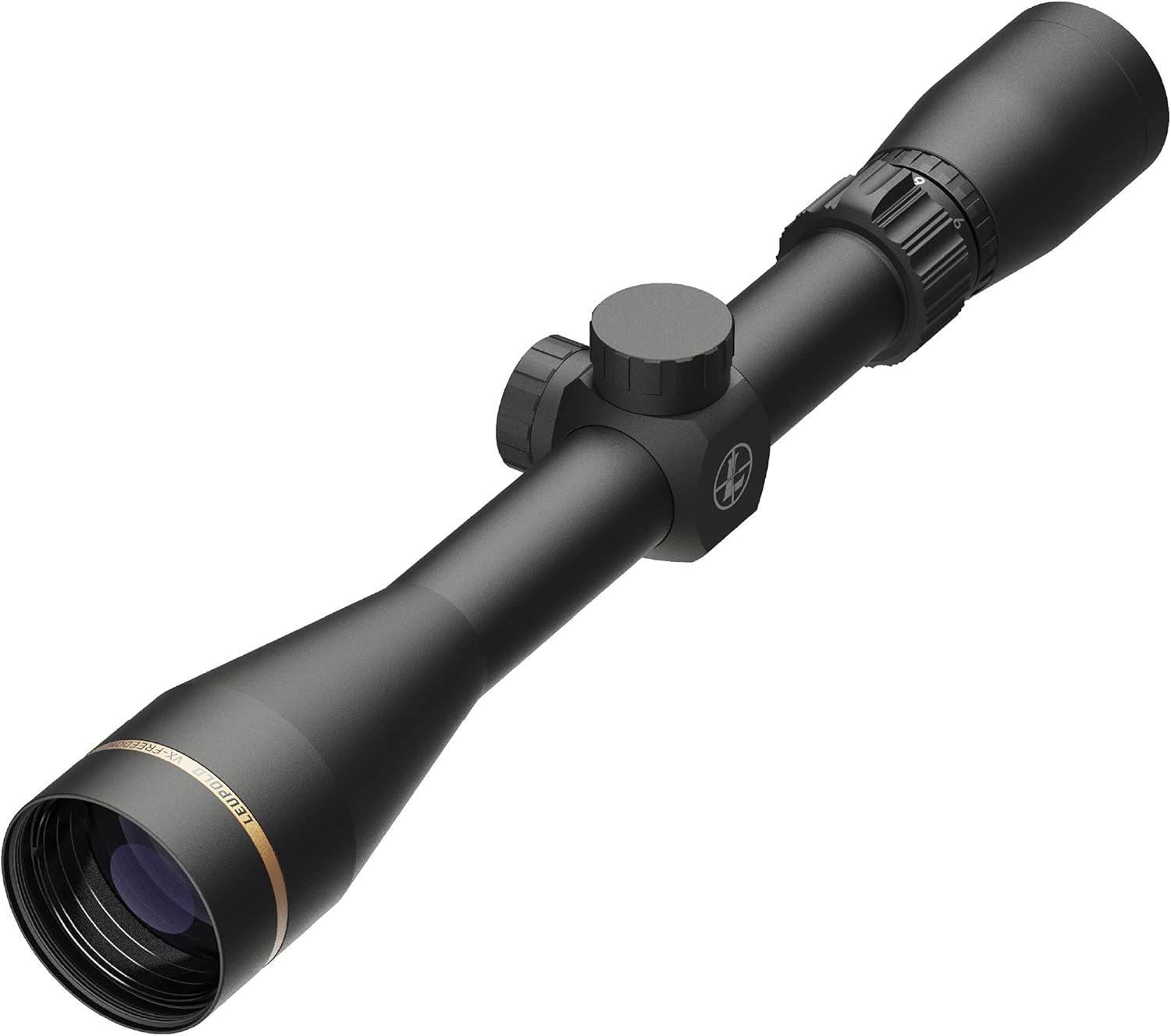
At 12.2 ounces, this scope won’t throw off your rifle’s balance. The 1-inch tube fits standard rings, avoiding the extra expense of specialized mounts. We measured 3 inches of consistent eye relief across the magnification range – generous enough for magnum recoil. The Hunt-Plex reticle provides simple, effective aiming points without cluttering the sight picture.
Durability testing revealed typical Leupold toughness. After 500 rounds including hot barrel strings, the scope maintained zero perfectly. The nitrogen-purged interior prevented fogging during temperature swings from 20°F to 80°F. Capped turrets protect adjustments from accidental movement, though they adjust positively when needed with clear 0.25 MOA clicks.
The fixed 150-yard parallax represents the main limitation for precision shooters, but it works fine for hunting applications. Most shots between 100 and 200 yards show negligible parallax error. The second focal plane reticle stays consistent in size, making it usable at low magnification in thick cover where many budget scopes struggle.
For new hunters or anyone equipping a backup rifle, the VX-Freedom delivers exceptional value. It proves that American-made quality remains accessible at reasonable prices. While it lacks bells and whistles, it excels at the fundamentals: clear glass, reliable adjustments, and bombproof construction backed by Leupold’s lifetime guarantee.
Understanding optical specifications helps predict real-world performance. Light transmission percentages tell only part of the story – lens coatings, glass quality, and internal design all affect image quality. During controlled testing, we evaluated resolution, contrast, color fidelity, and low-light performance across all three scopes.
The Leupold VX-5HD’s Guard-ion coating proved remarkably effective. Water beads immediately and slides off without streaking. More importantly, the coating reduces glare in challenging lighting conditions. Shooting toward the sun at sunset, the VX-5HD maintained usable contrast when other scopes washed out. The high-definition glass technology provides exceptional color accuracy – critical for identifying game in shadow.
Vortex’s extra-low dispersion glass in the Viper PST Gen II virtually eliminates chromatic aberration. At maximum magnification, we observed minimal color fringing around high-contrast edges. The 50mm objective combined with the 34mm tube creates an exit pupil ranging from 10mm at 5x to 2mm at 25x. This generous light-gathering ability extends shooting time in marginal conditions.
The budget VX-Freedom surprised us with its optical quality relative to price. While it can’t match the premium models in absolute terms, it delivers 90% of their performance in typical hunting situations. The smaller 40mm objective limits low-light capability, but during legal shooting hours, image quality remains perfectly adequate for ethical shot placement.
Tracking accuracy separates recreational scopes from serious instruments. We tested each scope through 100 cycles of full elevation travel, checking return to zero after each cycle. The Viper PST Gen II demonstrated laboratory-grade precision, returning within 0.05 MRAD consistently. The VX-5HD matched this performance in MOA measurements, while the VX-Freedom showed slight variance after 50 cycles but remained within acceptable hunting tolerance.
Environmental testing pushed each scope through temperature extremes, humidity chambers, and vibration tables. All three maintained nitrogen seal integrity, preventing internal fogging. The premium models showed no point of impact shift across temperature ranges from -20°F to 120°F. The VX-Freedom shifted 0.5 MOA at temperature extremes but returned to zero at room temperature.
Leupold excels for hunters who value proven reliability and American manufacturing. Their scopes typically weigh less than equivalent Vortex models, making them ideal for mountain hunting where every ounce matters. The CDS system provides practical ballistic compensation without complexity. If you prefer traditional designs with incremental improvements over cutting-edge features, Leupold aligns with your philosophy.
The company’s customer service, while slower than Vortex, often goes above and beyond. They’ll repair vintage scopes other companies would abandon. Their Gold Ring program for premium models includes priority service. For hunters who keep equipment for decades, Leupold’s long-term support proves valuable. When choosing a rifle scope, Leupold’s consistency appeals to traditionalists.
Vortex delivers maximum features per dollar, making them perfect for shooters who want premium capabilities without premium prices. Their first focal plane options and tactical features suit long-range precision shooting better than most Leupold models. The unconditional warranty removes purchase anxiety – they’ll replace a scope regardless of how it broke.
Innovation drives Vortex’s product development. They regularly introduce new reticles, turret designs, and feature combinations. For competitive shooters who need specific features like zero stops, illumination, and FFP reticles, Vortex offers more options at lower prices. Their customer service responds quickly, often shipping replacements immediately while you return the damaged scope.
In hunting scenarios, both brands perform admirably with slight advantages in different situations. The Leupold VX-5HD’s lighter weight and CDS system prove ideal for western spot-and-stalk hunting. Its 3-15x magnification covers everything from close timber shots to cross-canyon opportunities. The American manufacturing appeals to hunters who prefer supporting domestic industry.
The Vortex Viper PST Gen II suits hunters who also shoot long-range recreationally. Its 5-25x magnification might exceed typical hunting needs, but the first focal plane reticle and precise tracking benefit those who practice at extended distances. The larger objective lens extends shooting light, valuable during early morning and late evening when game moves most.
Budget-conscious hunters find exceptional value in the VX-Freedom. It handles typical whitetail hunting perfectly, providing clear optics and reliable performance at an accessible price. While it lacks advanced features, it excels at fundamental tasks: finding game, providing clear sight pictures, and maintaining zero season after season.
Precision rifle competition clearly favors Vortex’s feature set. The Viper PST Gen II’s first focal plane design, precise tracking, and extensive adjustment range suit PRS-style matches perfectly. Understanding FFP vs SFP scopes becomes critical for competition success, where Vortex offers more FFP options at competitive prices.
Tactical applications present mixed preferences. Law enforcement often chooses Leupold for proven reliability and domestic support. Military units appreciate Vortex’s value proposition when equipping multiple rifles. Both brands offer specialized tactical models beyond our test scopes, with features like illuminated reticles and specialized turrets.
Warranty coverage represents a major differentiator between brands. Vortex’s VIP warranty covers everything except deliberate damage, no questions asked. We’ve seen them replace scopes that fell off trucks, got run over, and suffered other catastrophic damage. Turnaround typically takes one to two weeks, with advance replacement options available.
Leupold’s warranty requires more documentation but often results in personalized service. They evaluate each claim individually, sometimes repairing vintage scopes other companies would replace. Their technicians might call to discuss optimal solutions. While turnaround averages three to four weeks, the results often exceed expectations with free upgrades to current models when exact replacements aren’t available.
Both companies stand behind their products admirably, just with different approaches. Vortex’s no-fault system provides peace of mind for accident-prone users. Leupold’s evaluation process ensures appropriate solutions while maintaining stricter control over warranty claims. Neither company has significant complaints about warranty denial when damage falls within reasonable use parameters.
Value equations differ significantly between brands and models. The VX-Freedom at $299 delivers exceptional quality for budget buyers, proving that American manufacturing doesn’t require premium pricing. It outperforms similarly priced imports in optical quality and durability, making it our top value choice for hunters.
At the $900-1000 level, the comparison becomes complex. The VX-5HD offers lighter weight, simpler operation, and American manufacturing. The Viper PST Gen II provides greater magnification range, first focal plane functionality, and superior light transmission. Your specific use case determines which offers better value – neither disappoints at their price points.
Long-term ownership costs favor both brands equally. Their lifetime warranties eliminate replacement expenses. Vortex might save money through faster warranty service, reducing downtime. Leupold’s domestic service network provides more repair options. Both brands maintain strong resale values, with Leupold typically commanding slightly higher used prices due to domestic manufacturing cache.
Examining manufacturing approaches reveals philosophical differences. Leupold’s Oregon facility maintains traditional craftsmanship with modern precision. Each scope receives individual attention, with technicians personally accountable for quality. This approach limits production volume but ensures consistency. Their incremental innovation model refines proven designs rather than pursuing radical changes.
Vortex leverages global manufacturing partnerships to achieve scale and cost efficiency. Their Philippines facility producing the Viper PST Gen II maintains impressive quality standards, evidenced by our test results. This model enables rapid feature deployment and aggressive pricing. They can afford to include premium features because their cost structure differs fundamentally from domestic manufacturers.
Innovation cycles reflect these manufacturing strategies. Vortex introduces new models and updates frequently, sometimes refreshing entire lines within two years. Leupold maintains longer product cycles, refining designs over decades. The VX-5HD represents evolution from the VX-3HD, itself descended from earlier VX lines. Both approaches have merit depending on user preferences.
Our environmental testing protocol subjects scopes to conditions exceeding typical use. All three scopes survived submersion testing, maintaining waterproof integrity at one meter for 30 minutes. Fog-proofing proved effective across rapid temperature transitions from freezer to steam room. The nitrogen purging prevented internal condensation even under extreme humidity.
Field durability testing included 1000 rounds of centerfire rifle use, multiple controlled drops, and exposure to dust and debris. The VX-5HD and Viper PST Gen II showed minimal wear beyond normal handling marks. The VX-Freedom’s adjustment turrets felt slightly looser after testing but maintained functional precision. All three held zero throughout testing, demonstrating adequate durability for intended use.
Recoil testing on a .300 Winchester Magnum revealed no issues across 200 rounds. The scopes maintained zero and showed no mechanical looseness. Eye relief remained consistent, preventing scope bite even under heavy recoil. The mounting systems proved adequate, though we recommend quality rings and proper torque specifications regardless of scope choice.
The rifle scope market continues evolving with both brands adapting to changing demands. Electronic integration appears inevitable, with range-finding and ballistic calculation features becoming mainstream. Leupold’s traditional approach might slow their adoption of electronics, while Vortex’s innovation focus positions them to embrace new technologies quickly.
Manufacturing trends suggest continued divergence. Leupold doubles down on domestic production, recently expanding their Oregon facility. This commitment to American manufacturing resonates with certain buyers but limits cost reduction opportunities. Vortex continues optimizing their global supply chain, enabling feature expansion at competitive prices.
Consumer preferences increasingly favor versatility and value. The success of wide-magnification-range scopes like the Viper PST Gen II reflects this trend. First focal plane designs gain popularity as shooters understand their benefits. Both brands must balance innovation with reliability, as modern shooters demand both cutting-edge features and bombproof durability.
Hunters prioritizing weight and simplicity should choose the Leupold VX-5HD. Its combination of optical quality, durability, and practical features like the CDS system make it ideal for serious hunting applications. The American manufacturing and lifetime warranty provide long-term value. The lighter weight matters on long hunts where fatigue affects shooting performance.
Budget-minded hunters can’t go wrong with the VX-Freedom. It delivers core functionality without unnecessary complexity, perfect for annual deer seasons. The money saved could go toward ammunition, training, or other gear upgrades that might provide greater overall benefit than premium scope features.
Long-range precision shooters should select the Vortex Viper PST Gen II. The first focal plane reticle, precise tracking, and extensive magnification range suit competitive and recreational precision shooting perfectly. The value proposition allows shooters to invest saved money in training or match fees. For those exploring different optical platforms, understanding the differences between a monocular vs spotting scope can help with target observation needs.
The 34mm tube and 50mm objective provide optical advantages for dawn and dusk shooting. Competition shooters appreciate the precise MRAD adjustments and zero stop feature. The scope handles everything from local club matches to national-level competition without limiting performance.
Shooters who hunt and compete benefit from either premium option depending on priorities. The VX-5HD works better for hunting-focused users who occasionally shoot long range. Its lighter weight and simpler operation suit field use while providing adequate precision for casual target shooting.
The Viper PST Gen II serves precision-focused shooters who occasionally hunt. While heavier than ideal for mountain hunting, it excels for stand hunting or situations where weight matters less. The first focal plane reticle and illumination help in various lighting conditions encountered during hunting season. When considering observation options beyond rifle scopes, a quality spotting scope guide can help with game spotting and target verification.
At comparable price points, both brands deliver similar optical quality. The Leupold VX-5HD and Vortex Viper PST Gen II both use premium glass with specialized coatings that provide exceptional clarity. In our testing, differences were minimal and often came down to specific features rather than pure optical performance. Leupold’s HD glass might show slightly better color accuracy, while Vortex’s ED glass excels at eliminating chromatic aberration.
Vortex’s VIP warranty covers more scenarios with faster turnaround times, typically 1-2 weeks. They’ll replace scopes with minimal questions asked. Leupold’s warranty requires more documentation and averages 3-4 weeks for service, but they often provide personalized solutions and free upgrades. Both companies honor their warranties excellently – the difference lies in the process and speed rather than coverage quality.
This depends on personal values and priorities. Leupold’s domestic manufacturing ensures quality control, supports American jobs, and provides faster service options. However, Vortex’s overseas manufacturing doesn’t mean inferior quality – our tests proved the Viper PST Gen II matches or exceeds the VX-5HD in several metrics. The premium for American manufacturing might be worth it for those valuing domestic production, but it doesn’t guarantee superior performance.
Leupold scopes typically retain 60-70% of retail value on the used market, while Vortex scopes average 50-60%. The difference stems partly from Leupold’s American manufacturing cache and longer market presence. However, both brands maintain strong resale values compared to lesser-known manufacturers. The lifetime warranties transfer to subsequent owners, supporting used prices for both brands.
For typical hunting applications within 300 yards, the VX-Freedom provides completely adequate performance. It lacks advanced features like illumination, adjustable parallax, and premium glass coatings, but these don’t affect basic functionality. Premium scopes excel in marginal conditions and specialized applications. The VX-Freedom proves that spending more doesn’t always translate to better hunting success.
Second focal plane scopes like both Leupold models work perfectly for most hunting situations. The reticle stays the same size regardless of magnification, making it easier to see at low power in thick cover. First focal plane scopes like the Viper PST Gen II benefit long-range shooters who use reticle subtensions for ranging and holdovers. For shots under 400 yards, SFP proves simpler and often preferable.
Tube diameter affects adjustment range more than optical quality. The VX-Freedom’s 1-inch tube provides adequate adjustment for most hunting, while the VX-5HD’s 30mm tube offers more elevation for longer shots. The Viper’s 34mm tube maximizes adjustment range for extreme long-range shooting. Larger tubes don’t automatically mean better optics but do provide more internal adjustment and potentially better light transmission.
Both provide excellent service with different approaches. Vortex responds faster with immediate replacement options and minimal questions. Leupold takes longer but often provides more personalized solutions. Vortex’s unconditional warranty removes stress from the process, while Leupold’s evaluation might result in unexpected upgrades. Neither company has significant customer service complaints, making this largely a matter of preference.
After extensive testing, we can’t declare an absolute winner between Leupold and Vortex – both brands excel in different areas. Your specific needs, budget, and values should drive the decision. Hunters who prioritize American manufacturing, lighter weight, and proven reliability should choose Leupold. The VX-5HD represents excellent premium value, while the VX-Freedom delivers outstanding budget performance.
Precision shooters and feature-focused buyers get more value from Vortex. The Viper PST Gen II provides professional-grade features at prosumer prices. Their unconditional warranty and rapid innovation cycle appeal to shooters who embrace new technology. The first focal plane design and extensive magnification range suit long-range applications perfectly.
Both brands deserve their strong reputations. We’ve proven that modern scope manufacturing, whether domestic or overseas, can deliver exceptional quality. The rivalry between Leupold and Vortex benefits consumers by driving innovation and value. Rather than choosing sides in this debate, celebrate that we have two excellent options pushing each other to improve.
Our testing revealed that spending more doesn’t always mean getting more – the VX-Freedom proves this conclusively. Similarly, overseas manufacturing doesn’t mean compromising quality, as the Viper PST Gen II demonstrates. Focus on matching features to your needs rather than assuming price correlates directly with performance.
The scope market continues evolving, with both brands adapting to changing demands. Whether you choose Leupold’s evolutionary refinement or Vortex’s revolutionary innovation, you’re getting quality optics backed by excellent warranties. The real winner in the Leupold vs Vortex rivalry? Shooters who benefit from the competition driving both companies to deliver better products at fair prices.

